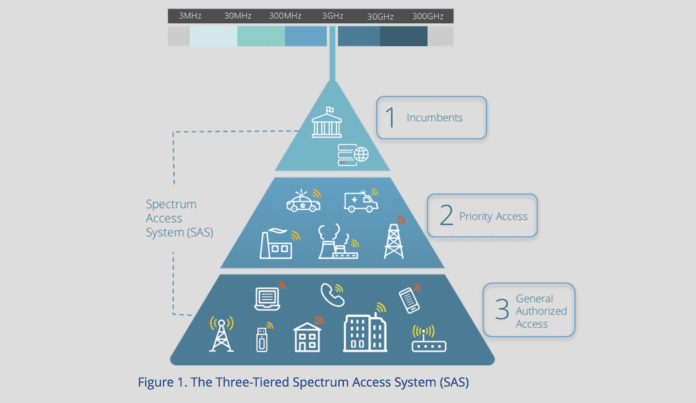Throughout the wireless industry, Citizens Broadband Radio Service (CBRS) has ignited speculative optimism – like a gold rush – predicated upon business opportunities to enable indoor and outdoor deployments such as Private LTE, Densification, 5G and the Internet of Things (IoT), and to address cellular coverage in the underserved mid-sized enterprise or “Middleprise” market. As a result, a rapidly-expanding ecosystem has formed consisting of myriad participants seeking to capture share in the emerging CBRS-enabled marketplace.
History reveals some strike it big, many find it unprofitable, and others go bust. Today’s CBRS Gold Rush displays both direct and nuanced correlations with other notable gold rushes. Here are three distinguishing characteristics:
Two-ring circus
The genesis of a gold rush is the perceived opportunity to achieve wealth by capitalizing upon a new discovery or market. This, in turn, attracts and amasses a broad ecosystem of primary and secondary participants. During the California Gold Rush, these were the miners and suppliers, respectively. In the CBRS economy, primary businesses focus on spectrum licensing, certification of Citizen Broadband Radio Service Devices (CBSDs), manufacture of hardware and software, network design, deployment, operation and ownership, and other activities. Whereas secondary businesses such as transportation, housing, stores, saloons and suppliers profited during the time of the 49ers, trade associations, conferences, publications, consultants and other entities are similarly staking their claim amid the CBRS groundswell.
Takeaway: The economic scope of CBRS extends well beyond market sizing that considers exclusively the impact contributed by primary ecosystem participants.
Go early, go big or go home
Most markets, especially gold rushes, follow a lifecycle characterized by four stages: introduction, growth, maturity and decline. Often, early-to-market participants, including startups and small, nimble and innovative companies, are able to not only seize initial marketshare but, also, disrupt legacy businesses anchored in an older era. Over time, however, the landscape tends to shift to an oligopoly comprised of well-capitalized organizations that possess more efficient and effective business processes which, subsequently, enables them to overtake first-movers. Given the current telecom industry tends to be what Ev Williams refers to as a “big-company-tilted world,” it is likely startups and upstarts will find it particularly challenging to capture significant share in the CBRS market, even during the early stages.
Takeaway: Scale matters. Therefore, a small group of big companies will possess the vast majority of CBRS marketshare, and everyone else will compete for the leftovers.
Harmonic dissonance
As its name suggests, a gold rush is a significant surge and widespread influx of participants that vie against one another in the emerging market. Generally, the competitive landscape is insular, marked by internal rivalry within congruent industries. The CBRS market is distinctive because its ecosystem is a mash-up of participants among both homogenous and heterogeneous industries. Specifically, it spans the cellular stakeholders plus MSOs, Wi-Fi Access Point (AP) OEMs, device manufacturers, and more. For instance, DAS and Small Cell vendors compete against each other as well as with Wi-Fi AP manufacturers to support CBRS-enabled networks. Consequently, the increased and diversified competitive landscape has profound and disruptive implications on market leadership.
Takeaway: The CBRS competitive landscape will be distinguished by seemingly strange bedfellows and redistribution of leadership throughout virtually all market segments.
Readers are no doubt familiar with the aphorism “a rising tide lifts all boats.” It is my assertion that CBRS is, indeed, a rising tide which offers strong promise to ecosystem participants. However, some will encounter the benefits of swift currents while others will confront the challenges of eddies. Who will those participants be? I’ll answer that in a future piece.
About the Author: Mike Collado is a market development consultant who helps companies win mindshare and capture marketshare. He focuses on the intersection of PropTech and Smart Buildings with the application of wireless technology to advise ecosystem participants on go-to-market strategies. Mike’s career spans the wireless and ISP industries, and encompasses experience at Corning, SOLiD, MobileAccess and other high-performing technology organizations. Mike is a proponent of CBRS but, having lived through the dot-com and housing bubble gold rushes, is cautious about irrational exuberance. Contact him at mike(at)mikecollado.net.

